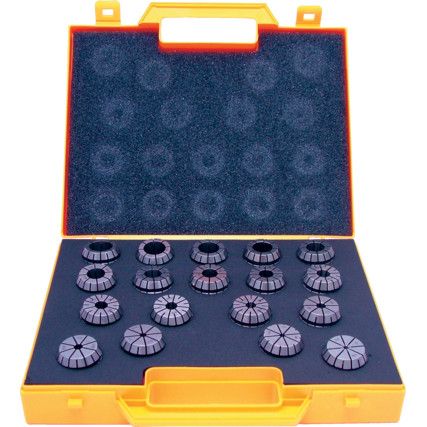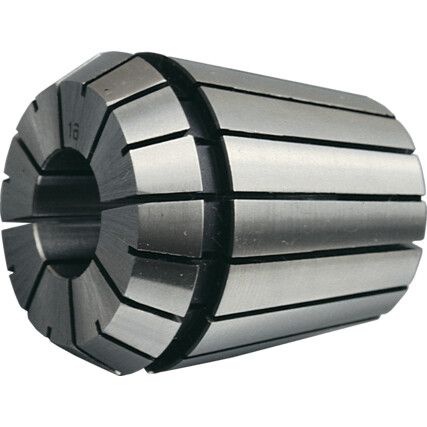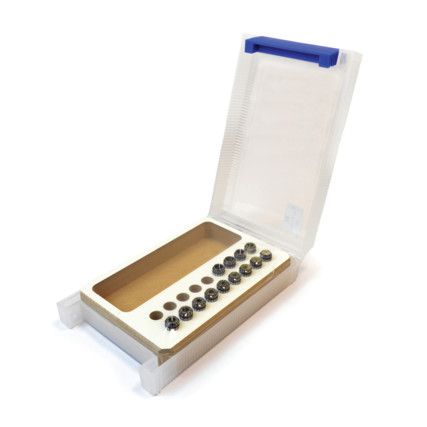Collets
Collets, or collet chucks as they're sometimes known, are an integral part of production in a wide range of sectors. Delivering reliable hold and alignment to a workpiece or tool, they're available in a variety of sizes as singles or in collet sets with multiple sizes to suit your needs.
Take a look at what Cromwell can offer you from high-quality and reliable brands like Indexa®, Parweld® and our own brand, Kennedy®.
What is a collet?
A collet is a variation of a chuck. It features a tapered collar that tightens around the workpiece or tool to keep it securely in place before work begins.
Why use a collet?
A collet features a cylindrical internal surface and a conical outer surface. When tightened, it reduces in diameter and exerts a compressive force onto an object to hold it securely. This ensures a sustained and secure hold on the workpiece for accurate alignment.
When are collets used?
Collets are a natural fit for woodworking and metalworking, as they exert the clamping force required for holding router bits and cutting tools in place. They also feature heavily in large scale manufacturing and are used in CNC machines for mass production. Additionally, collets are used in machine and automotive engines where valves and other internal mechanisms require a consistent clamping force for smooth operations.
Collet types
Collets are available in two types, one holds a workpiece, the other, a tool. There are, however, a range of styles for different uses and tools.
• ER style - Used for milling and drilling, this series clamps objects according to a size range.
• DNA style - an acronym of Dead Nuts Accurate, this style is ideal for small sized tools.
• TG style - short for tremendous grip, this style's 4° taper delivers a tighter grip than the ER style.
• SYOZ style - made from high carbon steel and conforms to DIN 6388, for use on a CNC machine.
• DA style - double angle collets are engineered for most tapping, drilling and reaming applications.
Considerations when choosing a collet
• Sizing - Ensure the collet and tool diameter or machine spindle match. Using the wrong sizing can put the collet under stress and reduce the strength of compression.
Collet jargon buster
We want you to be able to find exactly what you're looking for. So to make it easy, we've explained a key standard to help you understand the range of collets and their applications a little better.
What does the standard DIN ISO 15488:2006-01?
DIN ISO 15488:2006-01 refers to collets that feature a setting angle of 8° and replaces DIN 6499:2002-04.
Let's break it down...
• DIN - This standard originated from the German Institute for Standardisation (Deutsches Institut für Normung eV) and is used internationally
• ISO - An abbreviation for International Standards Organisation, who define and publish safety and quality standards
• 15488 - This is the assigned legislation number
• 2006 - This is the year the standard was published
• 01 - The edition number. This is the first edition
FAQs
What's the difference between a collet and a chuck?
Chucks are engineered to tighten around larger, uneven objects, while collets use a clamping collar around a part. They're ideal for gripping smaller components that are consistently sized.
What does a collet in an engine do?
Mainly used in four-stroke engines, a pair of collets are designated to hold inlet and exhaust valves securely in place.



